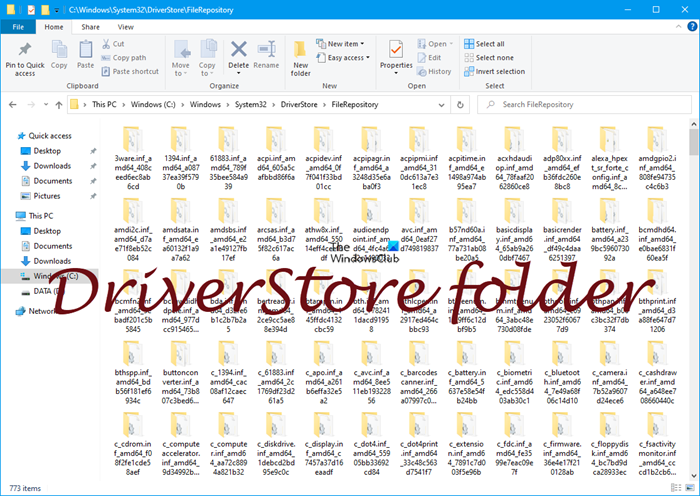What is DriverStore in System32?
The Driver Store is a trusted collection of third-party driver packages as well as native device drivers that ship with the system, which is maintained in a secure location on the local hard disk. Before a driver can be installed, it must first be injected into the driver store which is located under C:\Windows\System32\DriverStore\FileRepository. All files that are in the driver package are considered critical to the device installation. When a driver package is copied to the driver store, all of its files are copied. This includes the INF file and all files that are referenced by the INF file. All files that are in the driver package are considered critical to the device installation. The process of copying a driver package to the driver store is called staging. A driver package must be staged to the driver store before the package can be used to install any devices.
Is it safe to delete DriverStore folder?
If you delete all of the DriverStore folder contents on your Windows PC, this action will lead to errors, crashes, etc. In most severe cases, it could potentially render your system or the associated hardware inoperable. So basically you need to know what you are deleting. As a precautionary measure, we strongly recommend creating a restore point first before deleting any of the driver files from this folder.
How to cleanup DriverStore folder in Windows 11/10
We can clean DriverStore folder in Windows 11/10 in the following easy ways. We’ll explore this topic under the methods outlined below in this section as follows: Let’s take a look at the description of the step-by-step process in relation to each of the methods.
1] Safely clean DriverStore folder using Disk Clean-up
This is the safest, easiest, and straightforward method to clean the DriverStore. The Disk Cleanup Tool can clean up and remove old, unnecessary drivers from your Windows 11/10 computer.
When you launch the utility, choose the drive you want to clean up.Next press Clean up system files.Now select Device Driver Packages and any other options you want.Press on OK to run the tool.
You can also use Command-line version of Advanced Disk Cleanup Utility.
2] Clean DriverStore folder using Command Prompt
Another route to go to clean DriverStore folder on your Windows11/10 PC is by using Command Prompt. To clean DriverStore folder on your Windows11/10 PC using Command Prompt, do the following:
Press Windows key + R to invoke the Run dialog.In the Run dialog box, type cmd and then press CTRL + SHIFT + ENTER to open Command Prompt in elevated mode.
Once the command prompt window opens, follow the instructions in this guide on how to uninstall drivers using the command prompt.
3] Clean DriverStore folder using Batch file
To clean DriverStore folder on your Windows11/10 PC by creating a batch file, then run the .bat file, do the following:
Press Windows key + R to invoke the Run dialog.In the Run dialog box, type notepad and hit Enter to open Notepad.Copy and paste the syntax below into the text editor.
Save the file with a name and append the .bat file extension – eg; DScleanup.bat and on the Save as type box select All Files.
To cleanup the DriverStore folder, navigate to the location where you saved the file and run the batch file with admin privilege (right-click the saved file and select Run as Administrator from the context menu).
4] Using DriverStore Explorer
DriverStore Explorer is a freeware that helps you manage, list, add or remove the device drivers installed on your PC easily. It may not be able to delete system-critical drivers – and that is good! That’s it on the methods to clean the DriverStore folder in Windows 11/10!
How do I uninstall drivers from DriverStore?
Windows users can safely uninstall or delete a driver package from the driver store on the Windows computer in two main ways which are; uninstall drivers using a command prompt or uninstall the driver via Device Manager. For some hardware like the display, you can use the dedicated uninstaller – Display Driver Uninstaller. Related post: Manage Device Drivers in the Driver Store folder with DriverStore Explorer.

